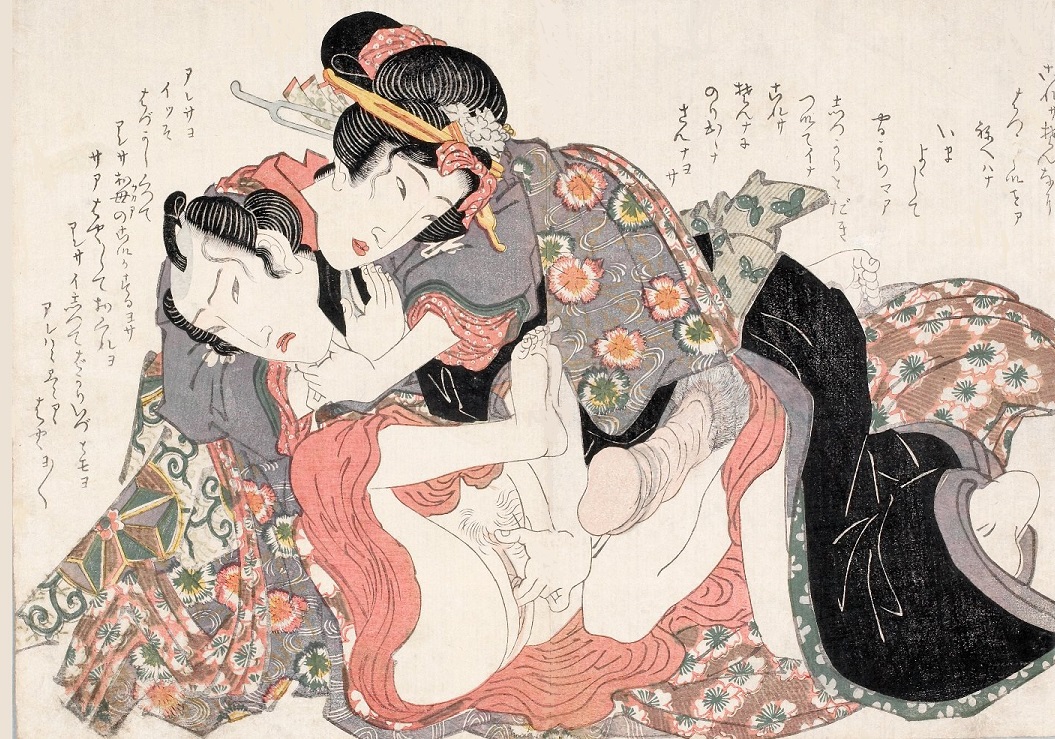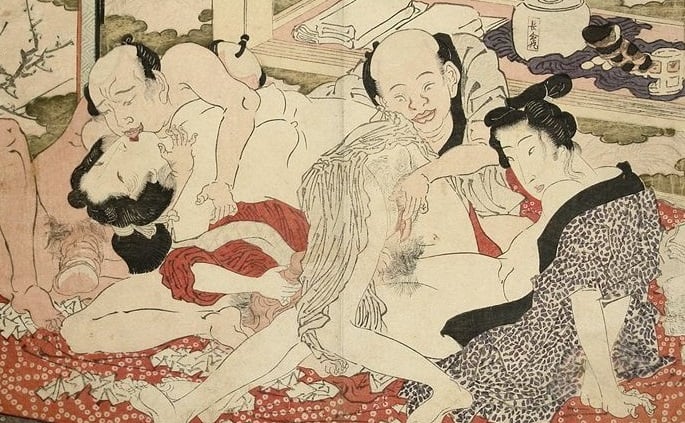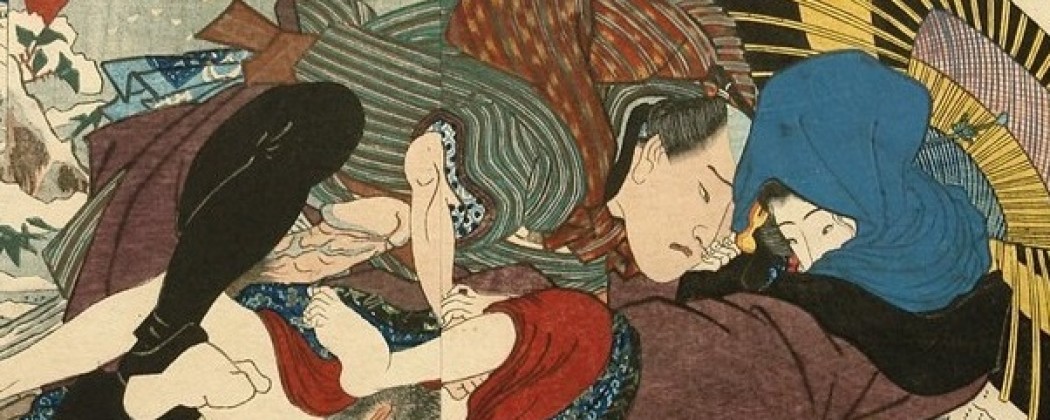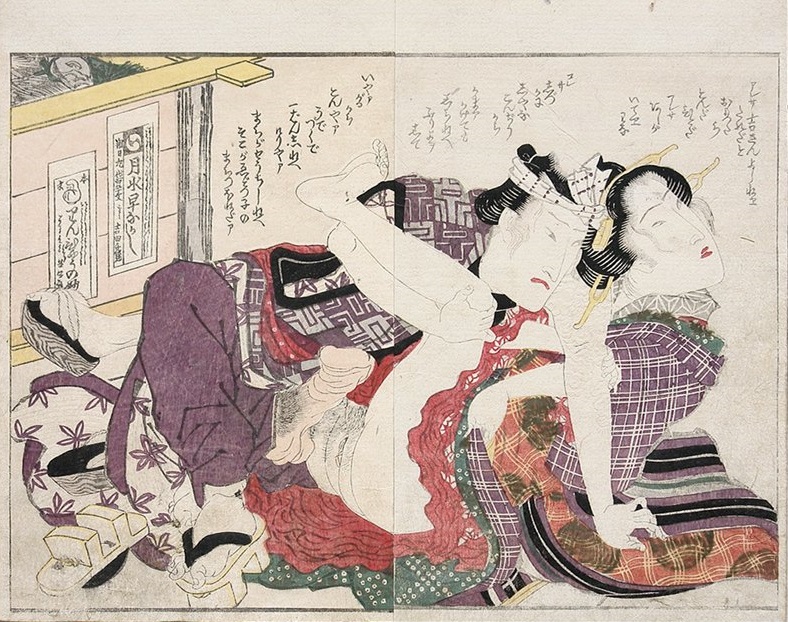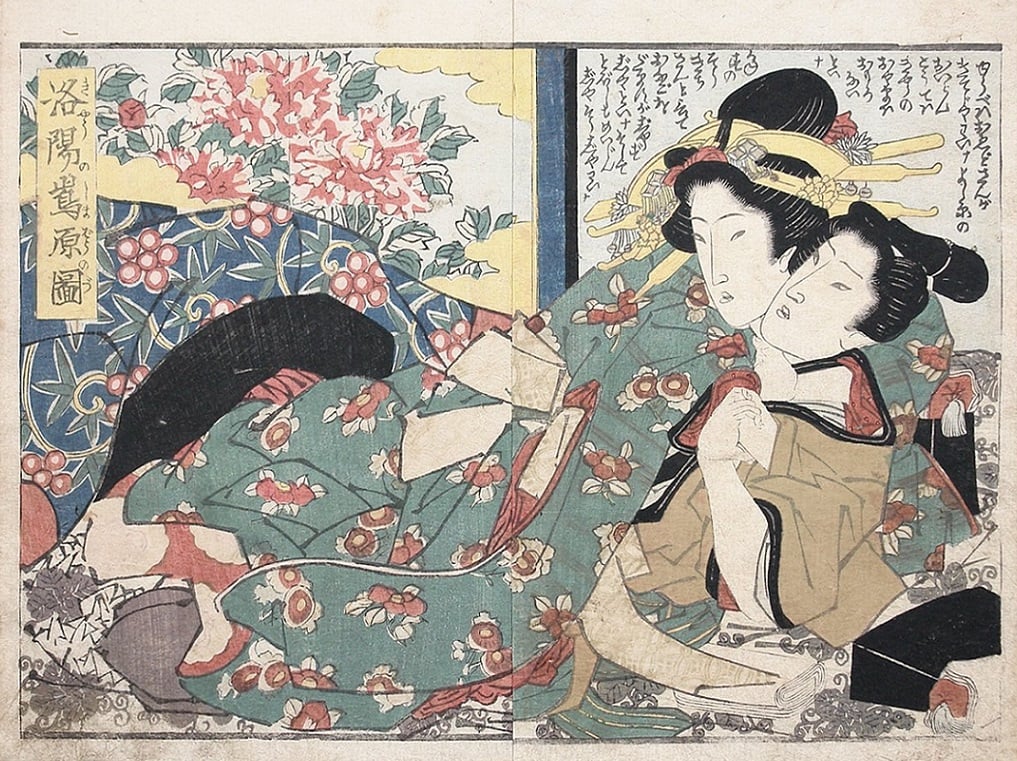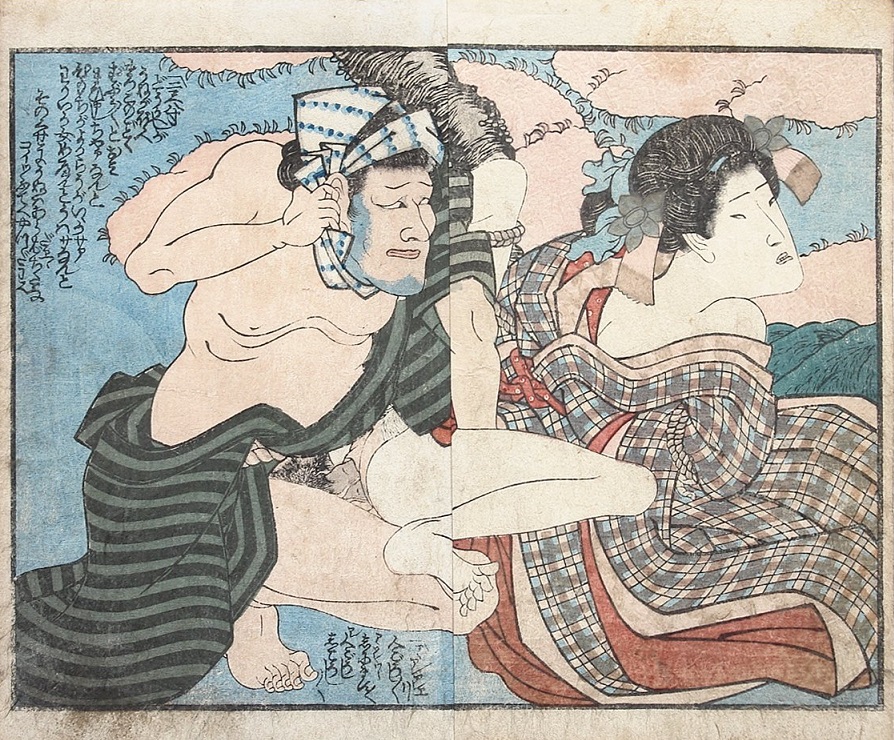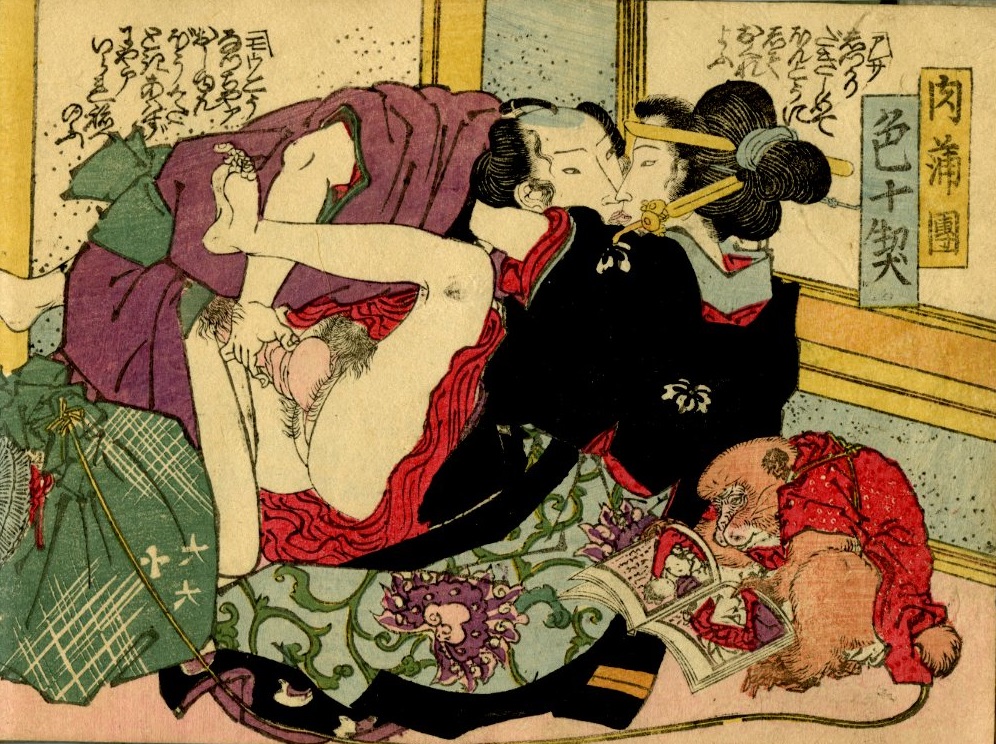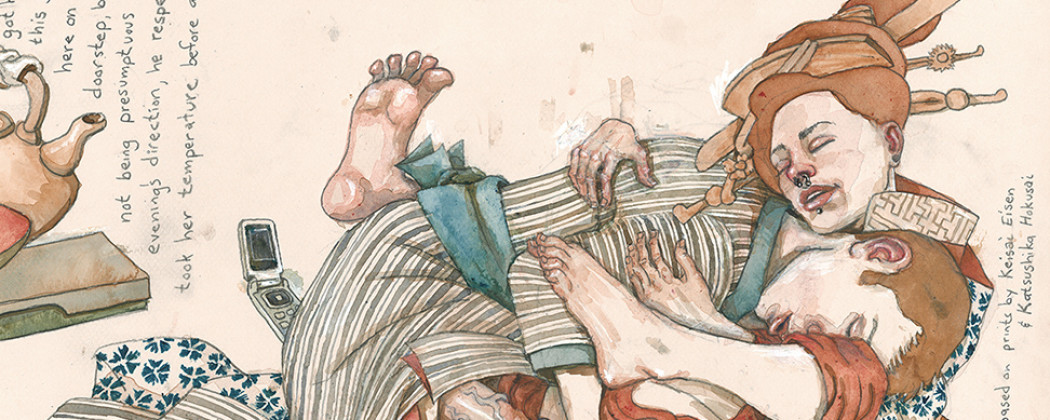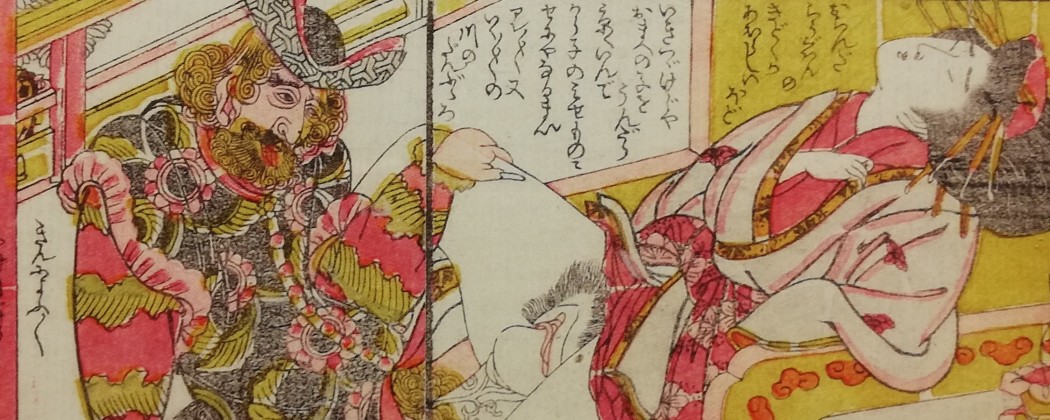
After Hokusai, undoubtedly the most striking figure among the later shunga artists is Keisai Eisen (1790-1848). Eisen was to prove one of the most prolific (together with Kunisada) of all ukiyo-e shunga masters. His several sets of larger album-prints are well known, and he produced more than three dozen different shunga books as well – mostly, signed with his erotic pseudonym. ‘Insai Hakusui’. Like Moronobu, Masanobu and Harunobu before him, Eisen was a skilled writer, and is thought to have written the texts, as well, for many of his shunga picture-books and novels.
Ranked Near Utamaro
Eisen’s first shunga productions are yet confused with those few works of his master Eizan, but by the early 1810s he had already begun publishing characteristic work of note. There is little doubt that, had Eisen been born a generation earlier, he would have ranked near Utamaro as one the great figure-print designers of ukiyo-e.
Smartness
In his shunga, however, Keisai Eisen produced not only some of his very best work, but for that matter, some of the rarely fine figure designs of the later Edo Period. His principal contribution to ukiyo-e lay in that sense of typically late-Edo iki (smartness, chic) which so delights Japanese connoisseurs, but may sometimes seem a trifle silly or overdone to the outsider. The print in Figure 1 for instance, ranks both in coloring and design on a level not far below that of Eisen’s ultimate mentor, Utamaro.
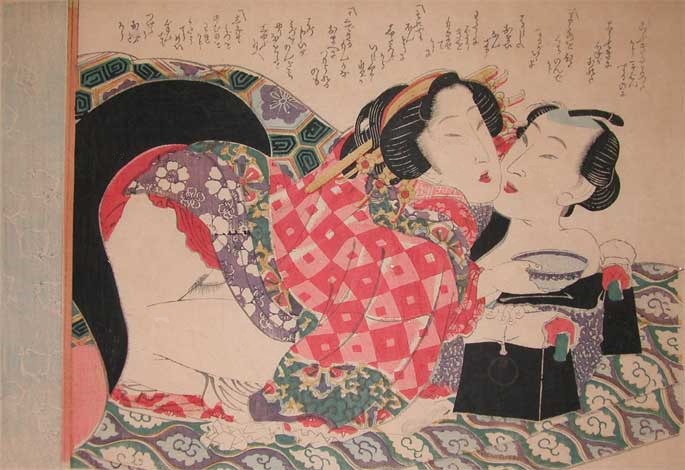
Fig.1. Oban print ‘Geisha holding a saké-bowl‘ (late 1810s)
Stimulants
The late-Edo concept of iki serves to indicate, however, a new and decadent attitude towards life and towards sex – an increased absorption with purely physical stimulation , and an endeavour for ever-increasing variety in such stimulants. This changing attitude was not, of course, Eisen’s invention – he was but mirroring the declining tastes of his times.
Popular Art-Form
It must always be remembered that ukiyo-e was essentially a popular art-form: primarily, it produced just what the public wanted. When (as with Sharaku) an artist of vision originated a new manner which neither met current demands nor created fresh ones, he simply ceased to get commissions, and turned to something other than art for a living. There was no ‘art for art’s sake’ in ukiyo-e.
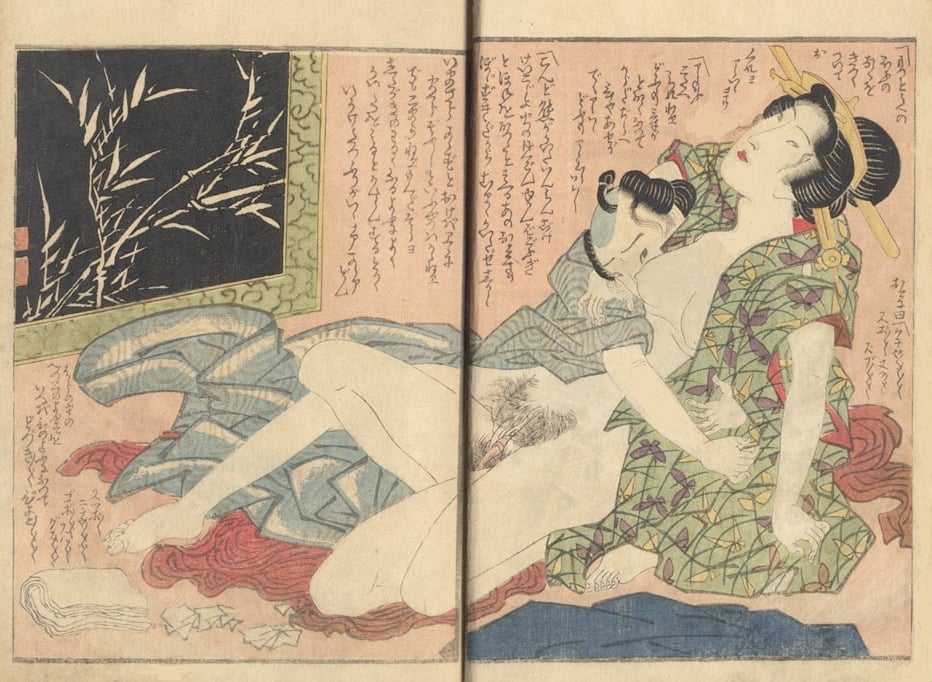
Fig.2. ‘Yoshiwara courtesan and secret lover‘ (c.1824) from the series ‘Ehon Fuji no yuki (Erotic Snows of Fuji)‘
Unusual
Figure 2 reveals another, perhaps more typical phase of Eisen’s work, a colour illustration to an erotic novel. The design is a striking one, and the idea of both protagonists looking so keenly at the reader is certainly an unusual one for ukiyo-e.
Without a doubt, Eisen’s success at such illustrated novels lay, in part, in his intimate connection with the texts as well. His erotica possess a unity of concept that was far more difficult of an achievement when author and artist divided the work.
Nameless Old Man
Eisen was a complicated person, on the one hand he was a highly cultured man who participated in the intellectual world of Edo, while on the other he indulged in the floating world and its sensory pleasures of the moment. He owes his notorious reputation mainly to his own personal confessions in the book he wrote called ‘Notes of a Nameless Old Man’ (short biographies on ukiyo-e artits). In this book he describes himself as an indulgent drinker and a frequent visitor of the pleasure quarters (worse still he owned a brothel himself in Nezu*).

Fig.3. ‘Young samurai and lover in a sensual act. Herons are depicted on the screen in the back’ (c.1820s)
Click HERE for more fascinating content on the unique artist Keisai Eisen…!!!
*the brothel in Nezu burned down in the 1830s
Source: ‘Erotic Art of the East‘ by Philip Rawson

